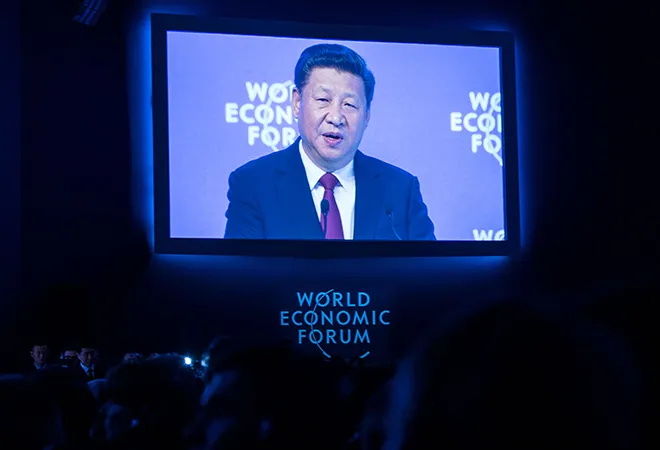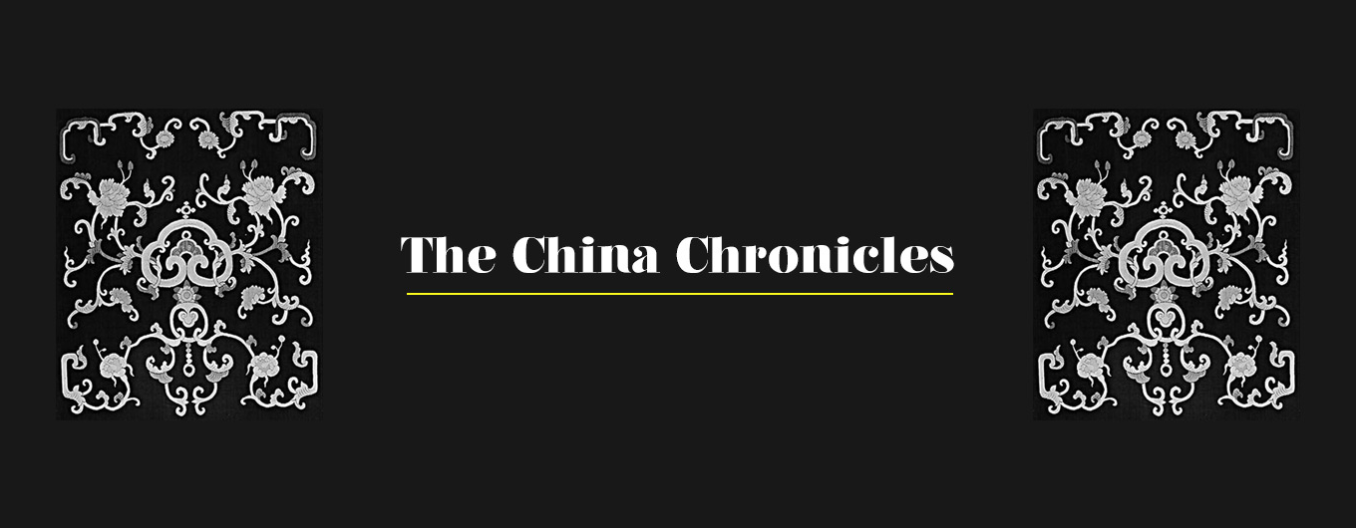 This is the seventh part in the series
This is the seventh part in the series The China Chronicles
.
Read the first six parts here.
In this era of protectionism, China is trying to emerge as a supporter of free trade and open markets. During the annual conference of the World Economic Forum at Davos this year, Chinese President Xi Jinping advocated greater integration amongst world economies. If one were to believe his words, it is pertinent to ask: Is China really opening up its markets to foreign competition or is it feigned enthusiasm for multilateralism just to position China favourably vis-à-vis the US?
https://twitter.com/wef/status/821379295327256579
In 1978, China launched the economic reform process of transforming its existing system of state-planning into a more liberal and market-based regime. This decision to liberalise the economy has played a significant role in China's economic development. Under its open-door policy (introduced as part of the reform package), Beijing encouraged foreign trade and investment. Nevertheless, trade and investment promotion policy of China was largely driven by mercantilism — promoting exports more than imports by adopting protectionist policy measures to accumulate wealth (foreign exchange). The government consciously offered special concessions to export industries in the form of no duties charged on materials imported for export purposes, setting up export-processing zones in provinces, special loans for short-term or long-term financing, among others. In addition, these industries were given autonomy to retain a part of the foreign exchange earned from exports and employ it for re-investment in the business. The government also provided a favourable exchange rate for converting foreign exchange to Renminbi (RMB) to exporting industries during 1980s (1 USD for 2.8 RMB as against the official exchange rate of 1 USD to 1.6 RMB). With regard to investment, foreign investors were encouraged to set-up factories (either independently or jointly with Chinese firms) in export-processing zones for producing export goods using Chinese manpower. This resulted in dual returns for China — increased employment and better wages for domestic labour, along with productivity gains from using technology, knowledge and capital of foreign investors.
China has selectively liberalised its economy — taking a piecemeal approach — opening only those sectors to foreign investors that were considered critical to growth and development of its economy. These sectors included mainly labour-intensive manufacturing units, and other sectors in need for upgraded technology and infrastructure (energy and traditional industries). The bureaucratic red tape and complex procedures also acted as a barrier to inward foreign investments to China. This was, however, the story until mid-1990s. As China advanced towards liberalisation, there were some changes evident in its trade and investment regime.
China has selectively liberalised its economy — taking a piecemeal approach — opening only those sectors to foreign investors that were considered critical to growth and development of its economy.
Later, China opened the services sector to foreign investors and even slashed tariffs on some of the manufacturing and agricultural imports. The average trade weighted tariffs reduced from 40.6 percent in 1992 to 9.1 percent in 2001. The process of lowering tariffs, eliminating non-tariff barriers (quotas) and opening key services to foreign participation was strengthened upon China's accession to the World Trade Organization (WTO) in 2001 and is still ongoing. In 2014, the trade weighted average tariff came down to 4.5 percent; however, it is higher than the tariffs of developed countries such as United States and European Union. China has reduced overall average tariffs since its WTO accession but for some sectors such as automobiles and agricultural commodities, high tariffs coupled with other trade-distorting measures (export subsidies, state-trading) continue to be imposed. China has often been accused by many developing and developed countries for unfair trade practices such as currency manipulation, intellectual property thefts, dumping, and foreign equity restrictions etc., which act as barriers to free trade. For instance — the United States filed a complaint against China in the WTO for creating obstacles in terms of large capital requirements for entry of US banks in the market, excluding US telecommunication companies from doing business in China, among others. India has also levelled criticism against China for its dumping practices. Since 2005, the WTO has recorded about 43 percent of all export subsidy-related complaints against Chinese firms.
China's integration into global economy has deepened over past few decades; nonetheless, this engagement has invariably been a cautious one — protecting the interests of its domestic players over foreign competitors. China generally takes a different perspective on globalisation and free trade — collaborating with and opening up to countries which could benefit it. History says it all. Even the access of foreign investors to Chinese markets comes with many strings attached. In other words, China wants foreign companies to transfer technology in exchange of being granted a permission to invest in the country. Forced technology transfer of the sort is forbidden in China's WTO accession agreement. However, it is blatantly followed in China. Regardless of the restrictions placed on foreign investors, China is able to extract economic benefits by engaging with other world economies. This is attributed to the growing dependence of world economies on China for finance, infrastructure development, semi-finished goods, and also final products.
China generally takes a different perspective on globalisation and free trade — collaborating with and opening up to countries which could benefit it. History says it all.
Chinese President Xi Jinping championing of free trade and multilateralism at Davos recently seems mere rhetoric, given vast trade and investment restrictions imposed on foreign companies by China in the past. According to the Information Technology and Innovation Foundation's Index which ranks countries after assessing the impact of their economic and trade policies on global innovation system, China ranks 44th out of 56 countries. This indicates that China behaves like a typical 'innovation mercantilist' by adopting policies such as forced localisation to trade and investment, export subsidies, or failure to protect intellectual property rights. These policies benefit only China and hurt the global innovation system. Despite a restrictive policy environment in China, it cannot be denied that selective liberalisation model has worked for country's growth. Over the period 1989-2016, China registered an annual average growth rate above nine percent. As long as China receives sufficient benefits from its piecemeal liberalisation approach, it would not be willing to make a transition to a more transparent, fair, liberal and rules-based trading system. It is unlikely that anything would change in China's trading regime.
Despite the rhetoric of President Xi Jinping, China was protectionist and will continue to be in the near future.
The views expressed above belong to the author(s). ORF research and analyses now available on Telegram! Click here to access our curated content — blogs, longforms and interviews.



 This is the seventh part in the series The China Chronicles.
Read the first six parts
This is the seventh part in the series The China Chronicles.
Read the first six parts  PREV
PREV



